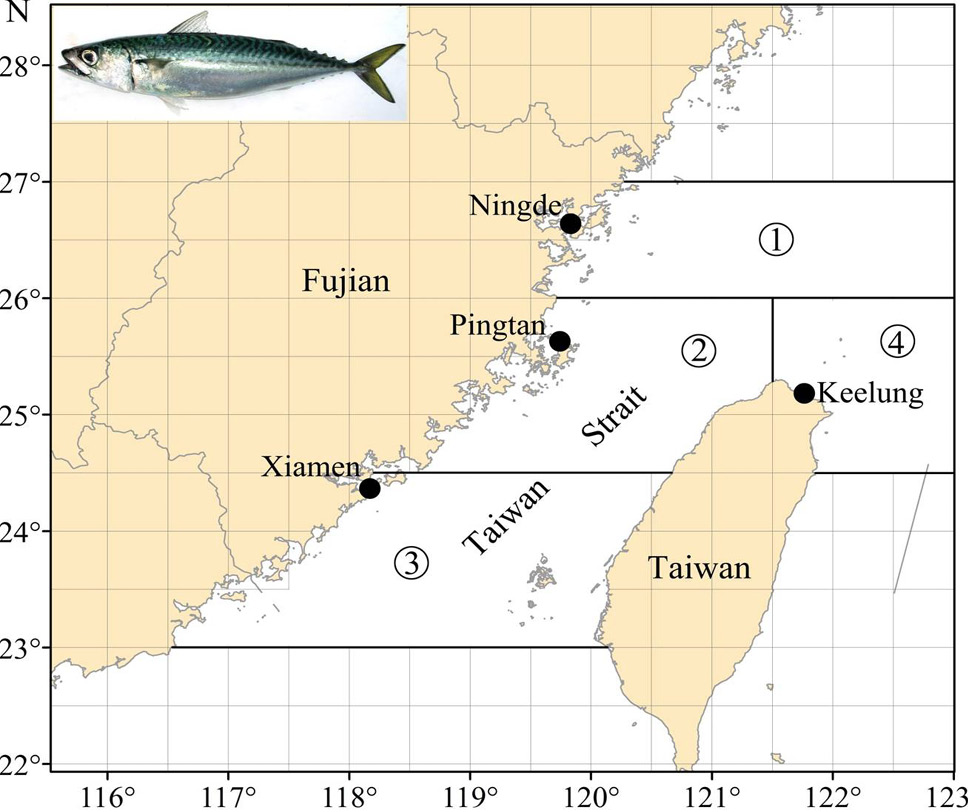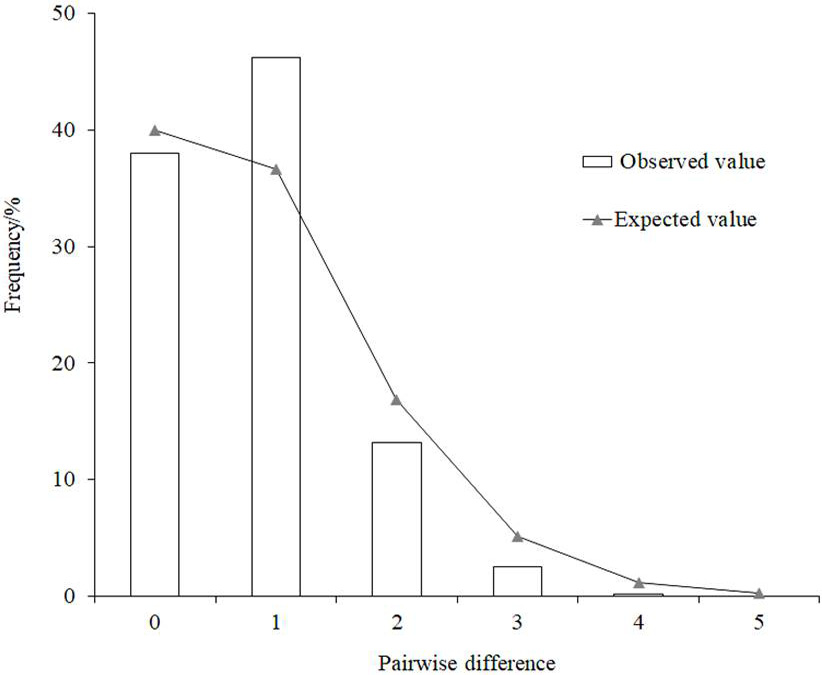The Mitochondrial COI Gene Reveals the Genetic Diversity of Chub Mackerel (Scomber japonicus) in the Taiwan Strait and its Adjacent Waters
The Mitochondrial COI Gene Reveals the Genetic Diversity of Chub Mackerel (Scomber japonicus) in the Taiwan Strait and its Adjacent Waters
Liyan Zhang1,2, Zhidong Zhou1,3, Haiping Li1,2, Yanlong Qiao4, 5 and Yueping Zhang1,3,*
The four sampling locations of S. japonicas. 1, Mindong fishing ground; 2, Minzhong fishing ground; 3, Minnan fishing ground; 4, Taipei fishing ground.
NJ tree of COI haplotypes of S. japonicus. S. tenuifilis was used as the outgroup. Bootstrap supports >50 in 1,000 replicates are shown.
Unrooted minimum spanning tree depicting the genetic relationship among S. japonicus COI haplotypes. Circle sizes are proportional to the haplotype frequency. Perpendicular tick marks on the lines joining the haplotypes represent the number of nucleotide substitutions.
The mismatch distribution of COI haplotypes of S. japonicas.
Bayesian skyline plots showing NefT (Nef is effective population size and T is generation time) changes in S. japonicus over time based on COI sequences. The upper and lower limits of the blue line represent the 95% confidence intervals of highest posterior densities (HPD) analysis. The black line represents median estimates of NefT.















